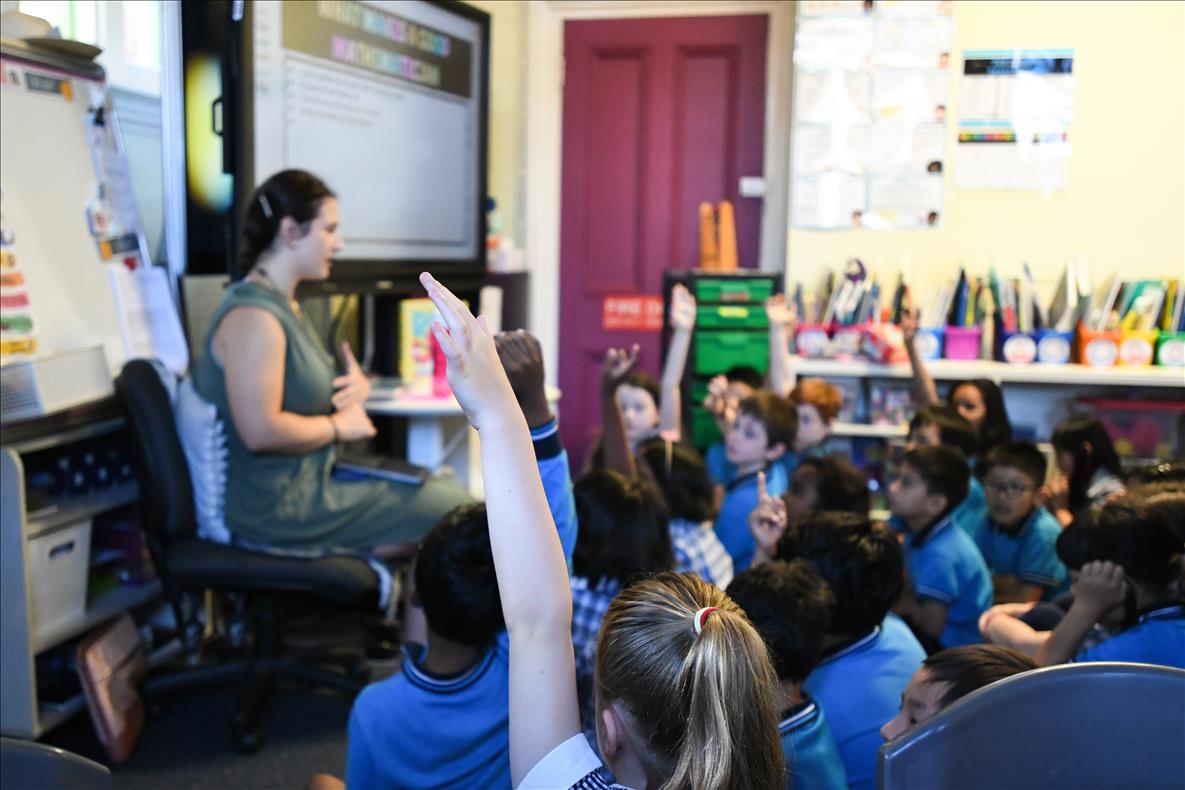
Too Many People Drop Out Of Teaching Degrees Here Are 4 Ways To Keep Them Studying
Australia's state and federal education ministers recently agreed to work on a plan to fix the country's teacher shortage .
The plan is due in December and one of five priority areas is“strengthening initial teacher education”.
Initial teacher education is the university degree students undertake to become registered classroom teachers. Worried that too many students are not completing their teaching degrees, federal Education Minister Jason Clare has asked Sydney University vice-chancellor Professor Mark Scott to report back on the issue by the end of the year.
We draw on our experience as teacher educators and educational researchers to suggest four ways to help increase the pace and rate of students completing their teaching degrees.
But first: what is the problem?It looks like there is no shortage of people wanting to be a teacher – at least to begin with.
Figures from the Australian Institute for Teaching and School Leadership show there is actually a modest increase in students signing up to initial teacher education courses. Between 2005 and 2019, numbers rose from 24,285 students to 28,694.
Even accounting for some natural attrition, these numbers are enough to sustain the teaching workforce. But the figures for program completion are significantly lower.
In 2005, 16,526 teachers graduated and in 2019 it was 16,644. We also know that while the number of students graduating from all fields of study at university increased by 40% from 2009 to 2019, the number of students graduating from teacher education declined by 5%.
Why might this be so?
1. Unreasonable testing demandsLANTITE is the national Literacy and Numeracy Test for Initial Teacher Education. It's a two-hour literacy test and a two-hour numeracy test, undertaken in formal exam-like conditions. All student teachers must pass both components in order to graduate.
There are logistical challenges with undertaking LANTITE. Opportunities to sit the test are limited to four testing windows a year, with in-person testing centres in a relatively small number of locations.
Read more: 'It hurt my heart and my wallet': the unnecessary test stressing teachers before they even make it to the classroom
This forces student teachers from regional and rural areas who prefer to attend a physical test centre to bear the extra effort associated with time away from home, including travel and accommodation costs.
The test is in addition to other university courses and costs A$196 per attempt. Research has found the test is not only highly stressful, but also expensive and not an accurate indicator of teacher quality.
It's time to find more convenient and less costly ways to assess student teachers' literacy and numeracy skills.
2. Costs of getting qualifiedStudent teachers must undertake uninterrupted blocks of professional experience in schools in each year of their degree. While this is a critical part of the degree, it comes at great personal cost.
The intensity of the professional placement, including full days in schools and time spent in the evenings gathering resources, planning lessons and marking students' work, means student teachers can't do other paid work.
It may mean they can't earn an income for up to six weeks at a time. On top of this, there are also travel expenses to get to school each day. They may also need to buy stationery and resources to use in their lessons.
A guaranteed stipend that takes into account the real costs of undertaking a teaching placement is essential.
3. No guarantee of a permanent jobDespite the media talk about the teacher shortage, many student teachers are unable to secure permanent employment in their preferred subjects, especially in city areas. The greatest need for teachers, and the greatest opportunity for permanent employment, is in rural and remote areas . However, it is not possible for all graduates to relocate for work.
Many new teachers seeking a job close to home are forced to cobble together a series of part time or short-term contracts, across a range of schools, year levels and subjects. Teaching out of their field of expertise is not unusual.
This means student teachers face uncertainty around their careers and the links between their studies and job prospects. High-performing student teachers need to know at the outset that there will be fair and reasonable opportunities to get a secure job close to home in their areas of expertise.
4. Declining statusIn March 2022, when he was acting federal education minister, Stuart Robert blamed “dud public school teachers” for the decline of academic results of Australian students.
Read more: No wonder no one wants to be a teacher: world-first study looks at 65,000 news articles about Australian teachers
Recent research that looked at media reporting on teachers in Australia for the past 25 years also found“teacher bashing” to be the norm. The media also made out that teachers' work was simple, and easy.
This reporting devalues the profession and weighs heavily on students when they are considering their commitment to their teaching studies (which are already costly and don't guarantee a job close to home and in their area of expertise).
We need to make sure student teachers know they are doing important and complex work and that it is valued by the schools and communities where they teach.

Legal Disclaimer:
MENAFN provides the
information “as is” without warranty of any kind. We do not accept
any responsibility or liability for the accuracy, content, images,
videos, licenses, completeness, legality, or reliability of the information
contained in this article. If you have any complaints or copyright
issues related to this article, kindly contact the provider above.


















Comments
No comment